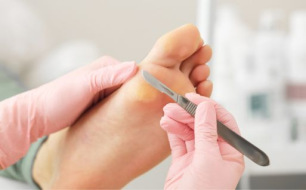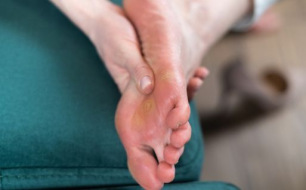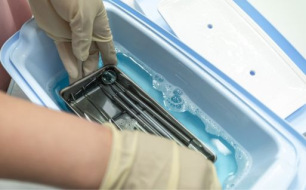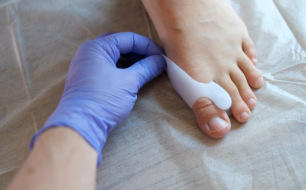Among the many equipment a pedicurist/podiatrist has and uses for his operations, we find compresses and dressings. These are available in several types useful in different situations. Podialux, expert in compresses and dressings for pedicure/podiatry in France, explains what models exist on the market and their uses.
What are the different types of dressings available in podiatry and what are they used for?
What are the different types of foot dressings? Sterile and non-sterile
 One might think that the choice of a dressing or a compress is trivial, but it is not. Indeed, there is a type of people who require a more specialized care equipment: high-risk patients. These are individuals who have conditions such as diabetes and thus require equipment that prevents disease transmission. This is where sterile compresses come into play, which perfectly fulfill this role. For other patients, there are non-sterile ones that are suitable for all operations.
One might think that the choice of a dressing or a compress is trivial, but it is not. Indeed, there is a type of people who require a more specialized care equipment: high-risk patients. These are individuals who have conditions such as diabetes and thus require equipment that prevents disease transmission. This is where sterile compresses come into play, which perfectly fulfill this role. For other patients, there are non-sterile ones that are suitable for all operations.
The different dressings for podiatrists: Mepore compress dressings
Easy to use, the Mepore pedicure/podiatry dressings are perfect for small wounds. Available on a roll, they have a compress band in their center that promotes healing. Their main advantage is that they can be cut to the desired size with a simple pair of scissors.
The different types of foot dressings: non-woven compresses
When we talk about compresses, two main types come to mind: woven and non-woven. By non-woven, we mean material that is more conducive to the treatment or care of a wound, as it is more respectful of the skin. Woven equipment is indeed to be avoided, as it is capable of sticking to the skin, which can lead to medical complications.
Copoline, dry dressing for feet and grooves
When a patient has an ingrown toenail, his grooves are also affected. A so-called copoline dressing placed in wicking is used in case of inflammation. The copoline is a relatively small and thin dressing that perfectly adapts to the size of a toe's grooves, which is accompanied by healing cream for an effective result.
To avoid, after treatment, the nail from recurring and injuries or redness from reappearing, an operation called orthonyxia is set up.
Self-adhesive bands for compresses and podiatrist dressings
Compresses, especially those applied to the feet, cannot hold on their own as they lack adhesive power. To prevent this from happening, a pedicurist/podiatrist sometimes uses a self-adhesive band that can be placed over a compress to hold it more easily.
Be careful, self-adhesive bands should not be confused with stick-on ones which, on the other hand, tend to peel off more easily and irritate the skin.
Want to know more about the types of wounds and foot dressings in France?
Would you like to know more about the different types of foot dressings? Would you like to ask us one or two questions? Then, you can contact us, either by phone or via our online form. Our teams will get back to you as soon as possible.




